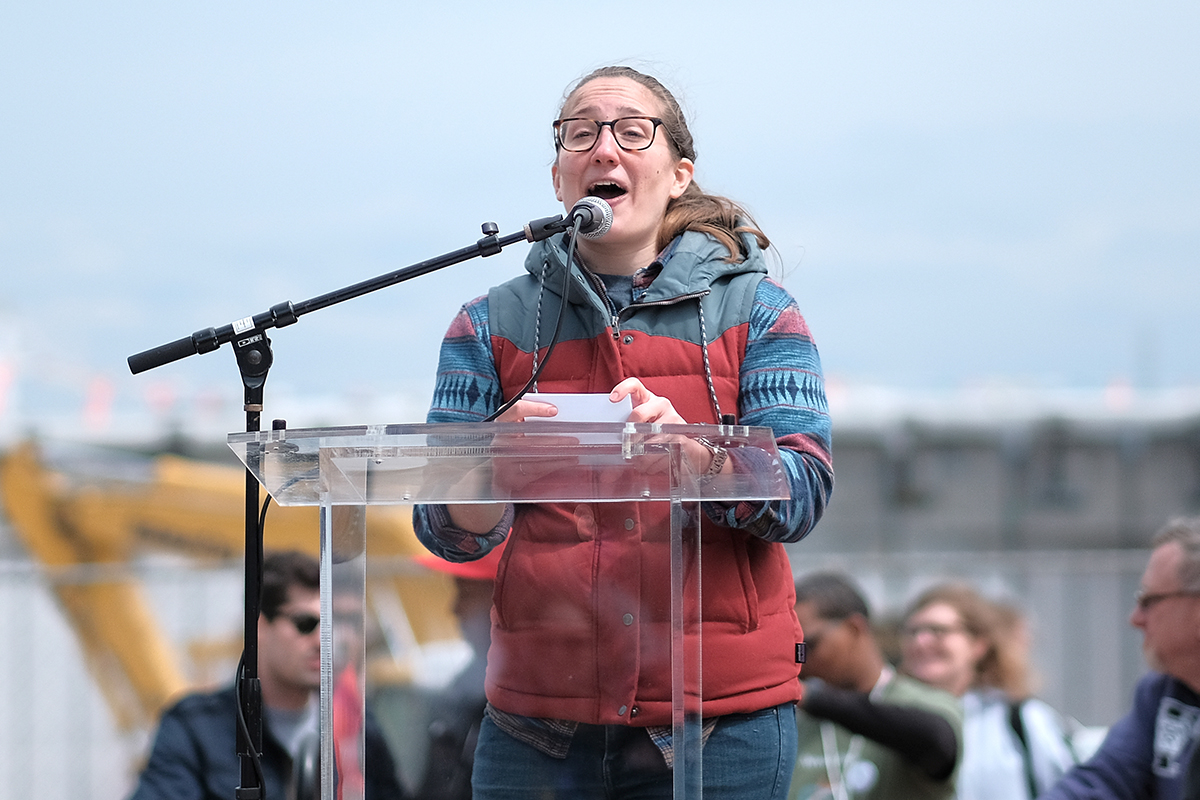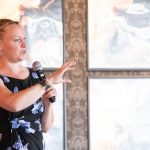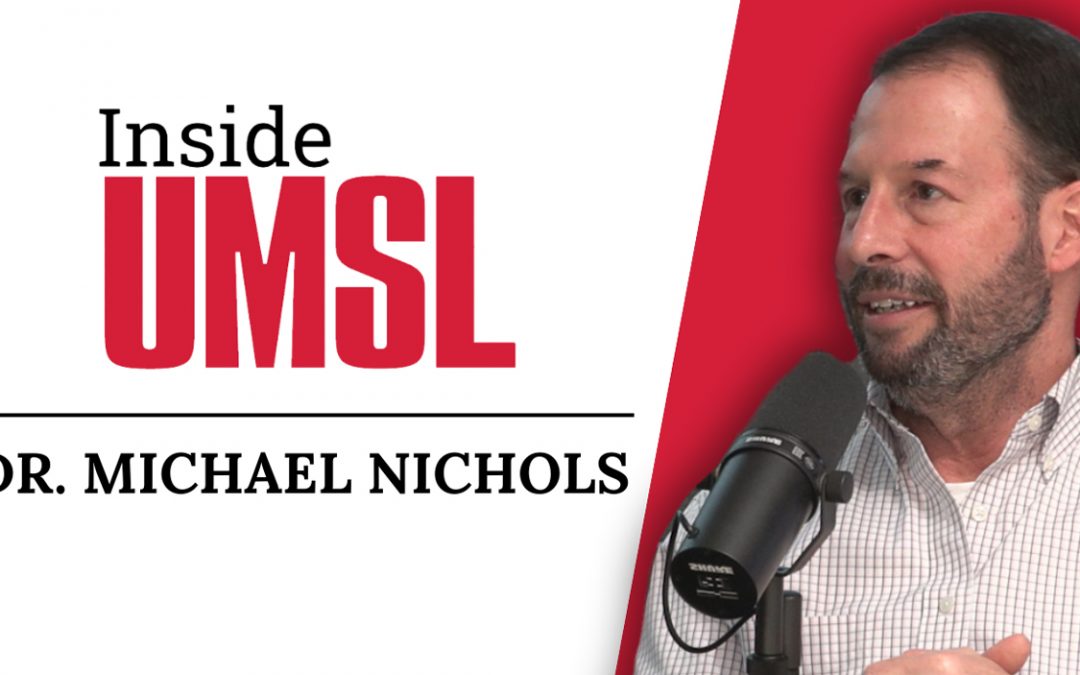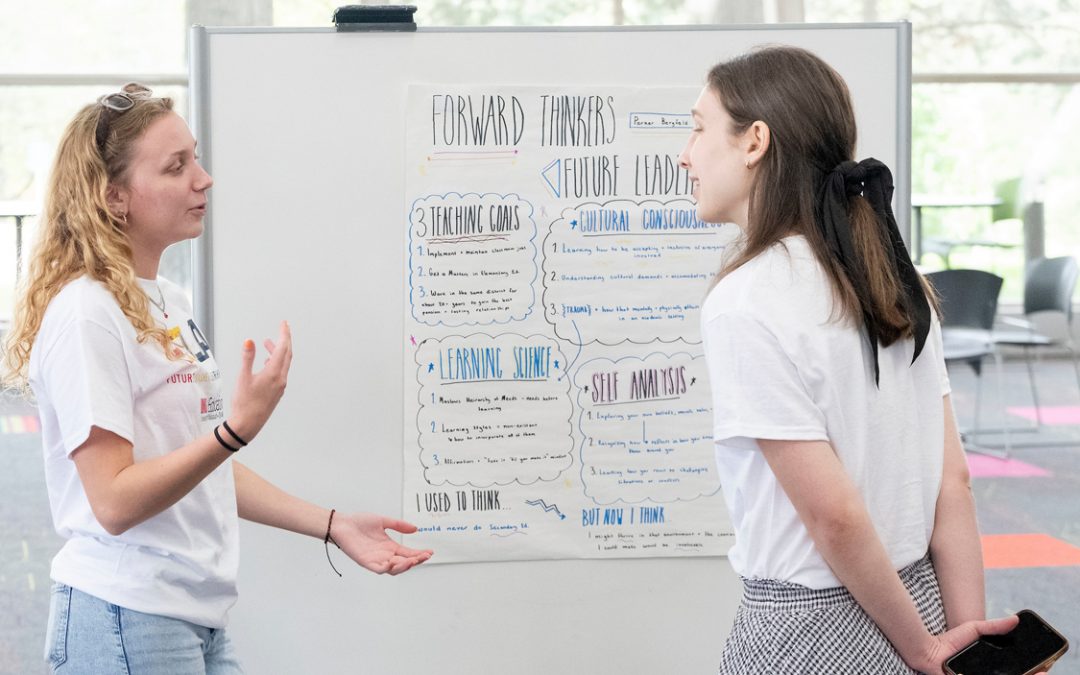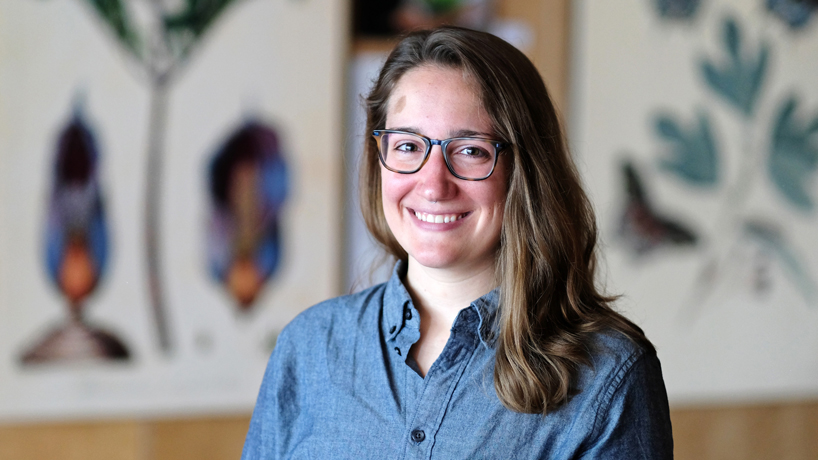
Doctoral candidate Emma Young is one 69 finalists selected to be part of the 2020 class of the National Oceanic and Atmospheric Administration and Sea Grant John A. Knauss Marine Policy Fellowship Program. (Photo by August Jennewein)
Emma Young’s staring down a deadline these days as she wraps up her research and types away at her dissertation.
To be fair, it’s self-imposed. The biology doctoral candidate at the University of Missouri–St. Louis is aiming to be ready to defend her work exploring parasite dynamics in an assemblage of neotropical birds in Gamboa, Panama, before the end of the semester.
“It’s hard for me to imagine something stopping me,” Young said confidently.
She already has plans for the new year, and the last thing she wants is the dissertation still hanging over her.
Young will be relocating to Washington, D.C., where, come February, she’ll begin work as an executive fellow through the National Oceanic and Atmospheric Administration and Sea Grant John A. Knauss Marine Policy Fellowship Program.
The program provides educational and professional experience for graduate students who have an interest in ocean, coastal and Great Lakes resources and in the national policy decisions affecting them through a one-year paid fellowship with a host in either the legislative or executive branch.
Young, who was nominated by Illinois-Indiana Sea Grant, is the first to admit those parameters make her an unusual fit among the 69 finalists selected for the 2020 class.
“There isn’t really a big aquatic component to my research,” Young said. “I felt like this odd duck coming into this policy program. A lot of people I know who have had this fellowship, you see pictures of them standing on boats holding fish or they’re wearing waders out in wetlands, stuff like that.”
But any concerns she might have had about being out of her habitat were put to rest after conversations with people she knows who have gone through the program. All the fellows are likely to be navigating new terrain from their graduate research – and on land.
“A lot of what I’m going to be doing is taking a large breadth of scientific topics and distilling it down for legislators or for members of the public or some combination thereof,” Young said. “I love doing that. That’s my favorite thing.”
A different calling
Science communication has been a focus of Young’s for most of her time at UMSL.
She decided after a year in the Department of Biology’s doctoral program that she didn’t want to follow the traditional path most graduate students take toward academia. It felt like it was taking her to a place too confined for her many interests.
“I love all scientists who are obsessed with their work,” Young said. “I think that’s amazing. I love my work as well. But what I really love about science is that it can be used as such a wonderful tool for so many things.
“I think folks in academia – this is my two cents because I don’t want to project on all the wonderful folks who are in academia – you have to be obsessed with what you’re studying. You have to love the pursuit of knowledge for knowledge sake. What gets me excited about science is when that knowledge can be used for concrete things, too. That can be for conservation or legislation or just improving the lives and livelihoods of people.”
Young wasn’t sure what that choosing a different path would mean for her academic future, so she sought advice from Patricia Parker, E. Desmond Lee Endowed Professor in Zoological Studies and the interim director of UMSL’s Whitney R. Harris World Ecology Center.
Parker at first tried to allay Young’s anxiety, telling her stories about her own uncertainty about becoming a professor and how she’d grown to enjoy parts of the job that hadn’t seemed appealing.
“She said, ‘Yeah, don’t try to talk me into it. I really don’t want to do that,’” Parker remembered.
It’s what happened next, as Parker tried to help her explore other potential avenues, putting her in contact with colleagues at the Saint Louis Zoo and elsewhere, that Young remembers being pivotal.
“Patty Parker really supported a lot of the initiatives that I was interested in taking,” Young said.
She’s not sure she’d have found as much encouragement in other doctoral programs.
Widening the audience
Young wants to share her love of science, an affinity she developed during a childhood exploring the outdoors with her older brother – both around her hometown of Baltimore or near her grandparents’ home in Oklahoma.
But she recognizes science doesn’t always feel accessible to nonscientists, particularly when it becomes more advanced. She’s looking to help bridge that gap.
Emma Young was one of the featured speakers at the 2017 March for Science in St. Louis. She addressed the importance of collaboration in the field and offered up UMSL’s Whitney R. Harris World Ecology Center as a prime example. (Photo by Satsawat Visansirikul, a UMSL doctoral student in chemistry)
Young found herself a featured speaker at the 2017 March for Science in St. Louis, talking to a crowd of thousands about importance of collaboration and embracing and learning from failure in science.
Last year, she and fellow UMSL student Eva Colberg founded Science Distilled STL, a bi-monthly event that attracts an audience of scientists and the general public for two informal 15-minute science talks broken up by trivia and drinks. It takes science out of the ivory tower and instead drops it near the bar at Urban Chestnut Grove Brewery and Bierhall.
“There’s so much science happening in St. Louis, but there aren’t a ton of opportunities for early career scientists to communicate their work,” Young said. “This provides an opportunity for ‘everyday scientists’ to interact with the public.”
Young also befriended Eli Chen, the science and environment reporter at St. Louis Public Radio | 90.7 KWMU, who helped her get involved as a producer for The Story Collider, a nonprofit organization, founded in 2010 and “dedicated to true, personal stories about science.” It shares them through a weekly podcast and live shows around the world.
“We need good, strong scientists who are in positions to communicate science, other than academic science,” Parker said. “We need those people, so I really celebrate that. She hit the ground running when she discovered these alternative pathways.”
Beyond storytelling, Young would also like to help scientists get better at communicating the significance and value of their own work in a world where, too often, misinformation reigns.
Built-in credibility
Young has an easy time relating to scientists because she’s one of them.
She came to UMSL to study with now-Curators’ Distinguished Professor Emeritus Bob Ricklefs, noted for his work in avian malaria and also the author of her college textbook as a biology major at Vassar College.
Originally, Young planned to make birds in the upper Mississippi River basin her research focus and landed a position as a research assistant at the Audubon Center at Riverlands that helped support her first two years of study.
Specifically, she planned to explore the impact of the U.S. Army Corps of Engineers’ conservation efforts on malaria infection in forests.
“Again, I really like science that can produce a practical application,” Young said. “This would help inform policy or at the very least the conservation action that the Army Corps is taking.”
She prepared grant proposals and received some funding from the Webster Groves Nature Study Society and the Harris Center. After getting permission to do work on the Army Corps’ land, she launched her pilot study.
“It was a huge disaster,” Young said.
River stages were abnormally high that year, so the areas where she planned to work were underwater for much of the summer. She was slogging around in mud up to her calves and constantly battling heat and mosquitos.
“I got some data, but it made me realize that if I were to make this my dissertation, I would either need to hire a crew of like 300 people to get enough data or I would need 10 years,” Young said.
It just didn’t seem feasible, so with Ricklefs’ help, she shifted her focus to Panama, where she could work with a data set that already existed. She’s been looking for patterns in the way birds there – of which there are hundreds of species – share malaria and how other forces, including rainfall and the birds’ social habits, govern the way birds are getting sick.
Finding the right fit
Young is looking forward to broadening the scope of her work next year when she begins her fellowship.
Where exactly she’ll be working is still to be determined. She’ll go to Washington next month for a week of interviews with representatives of different government agencies in the executive branch before submitting her top choices in a process she equated to medical school graduates getting matched with their residency programs.
Young doesn’t know yet if she’ll want to stick in a government job.
“I think it’s going to depend a lot on what I learn about myself and about this type of position in the next year,” she said. “This entire conversation has been almost too steeped in idealism, and I’m a very idealistic person. So, I think it’ll be a question of whether I can find a place to wedge that idealism within a federal or federally adjacent position or whether I find that too frustrating.”
She sees landing a position with a science-focused nonprofit or working as a science communicator at a university as other potential careers.
“It’s not like I say, ‘I have to be this, I have to be that,’” Young said. “I don’t have a lot of boxes to check. I like to go outside. I like to talk to people. I like to do science. I want to bring all those things together.”
Young is just one of the biology graduate students to receive research support through the Whitney R. Harris World Ecology Center at UMSL. The Harris Center will hold its 23rd World Ecology Award Gala on Nov. 15 at the Blanche M. Touhill Performing Arts Center and present the World Ecology Award to its longtime partners the Missouri Botanical Garden and the Saint Louis Zoo in recognition of their exceptional, decades long conservation initiatives in Madagascar.

